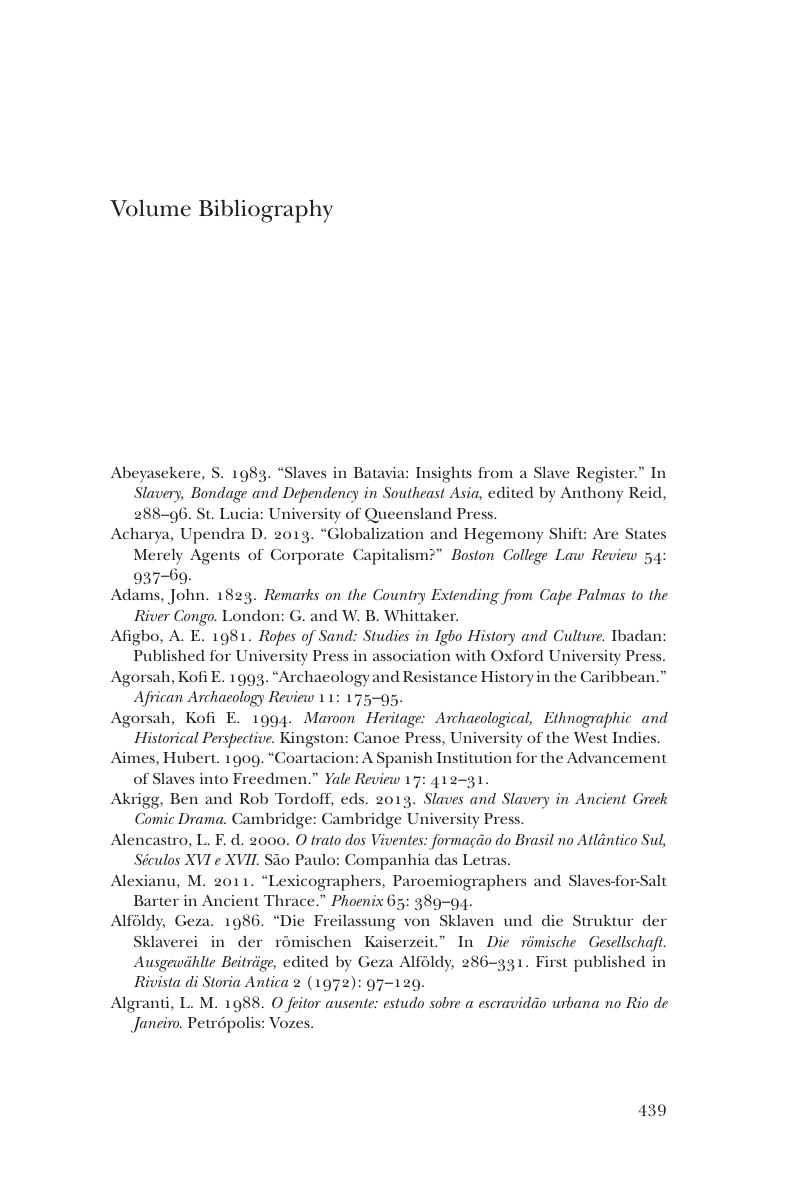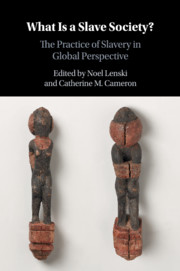Book contents
- What Is a Slave Society?
- What Is a Slave Society?
- Copyright page
- Contents
- Figures
- Maps
- Tables and Charts
- Notes on Contributors
- Acknowledgments
- Introduction: Slavery and Society in Global Perspective
- 1 Framing the Question: What Is a Slave Society?
- Part I Ancient and Late Antique Western Societies
- Part II Non-Western Small-Scale Societies
- Part III Modern Western Societies
- Part IV Non-Western State Societies
- Conclusion: Intersections: Slaveries, Borderlands, Edges
- Volume Bibliography
- Index
- References
Volume Bibliography
Published online by Cambridge University Press: 26 April 2018
- What Is a Slave Society?
- What Is a Slave Society?
- Copyright page
- Contents
- Figures
- Maps
- Tables and Charts
- Notes on Contributors
- Acknowledgments
- Introduction: Slavery and Society in Global Perspective
- 1 Framing the Question: What Is a Slave Society?
- Part I Ancient and Late Antique Western Societies
- Part II Non-Western Small-Scale Societies
- Part III Modern Western Societies
- Part IV Non-Western State Societies
- Conclusion: Intersections: Slaveries, Borderlands, Edges
- Volume Bibliography
- Index
- References
Summary

- Type
- Chapter
- Information
- What Is a Slave Society?The Practice of Slavery in Global Perspective, pp. 439 - 500Publisher: Cambridge University PressPrint publication year: 2018



